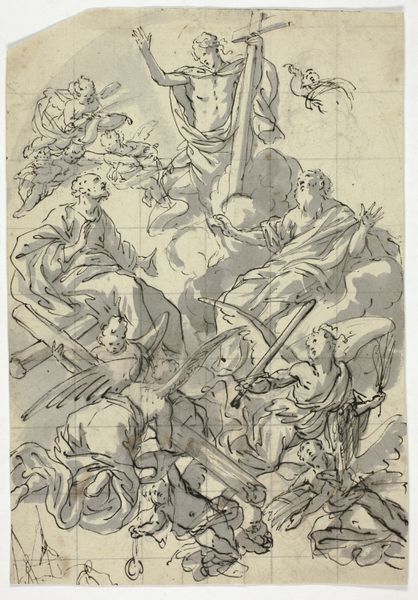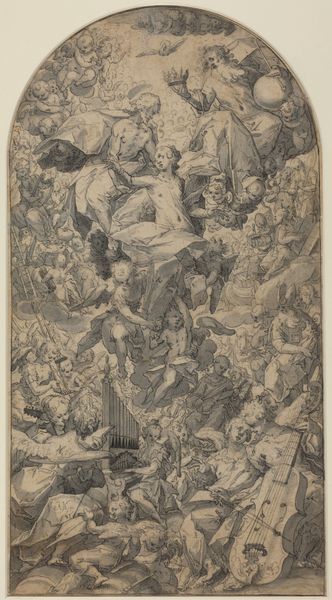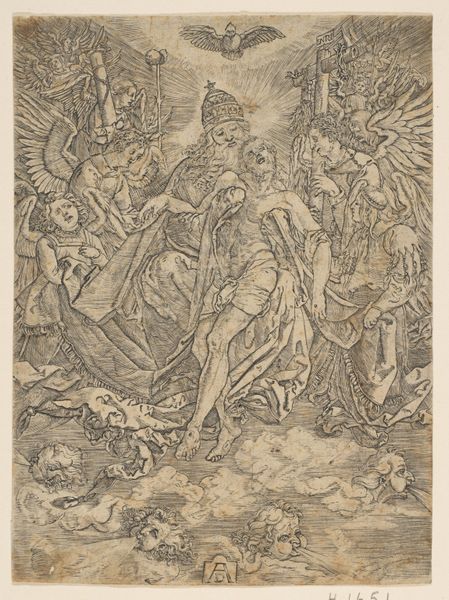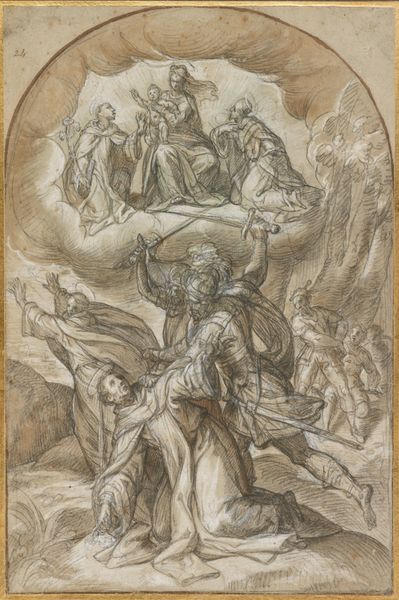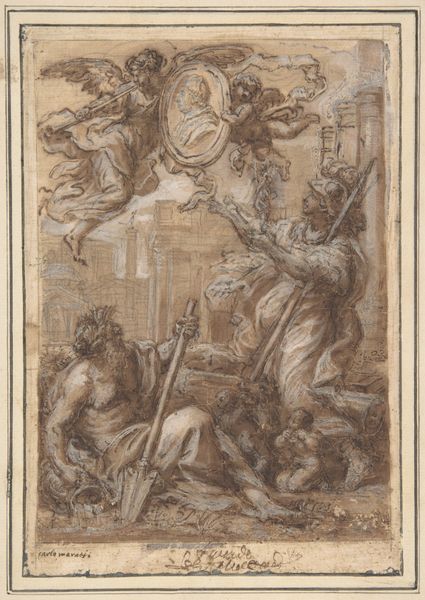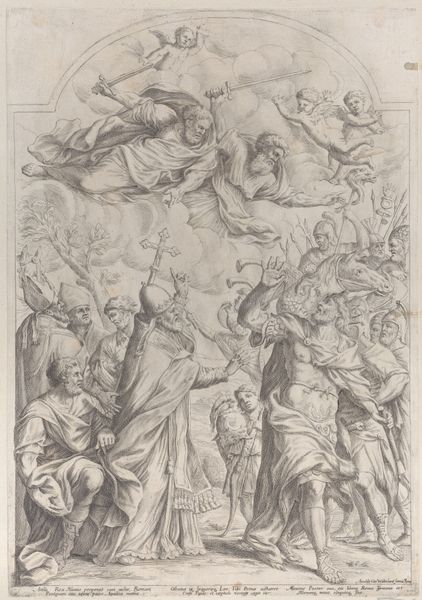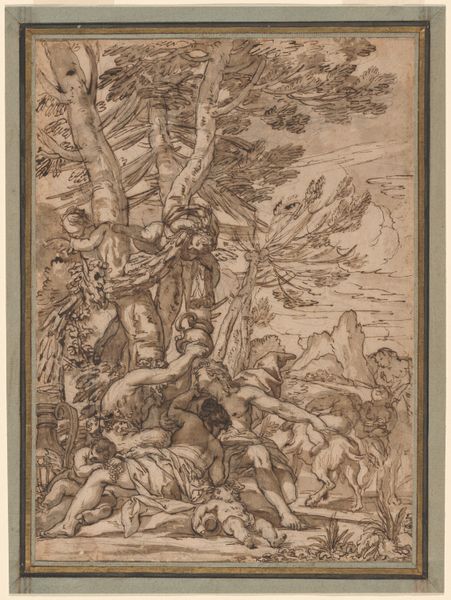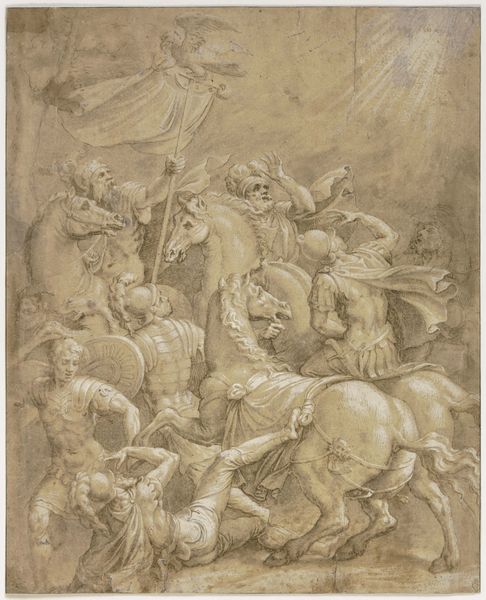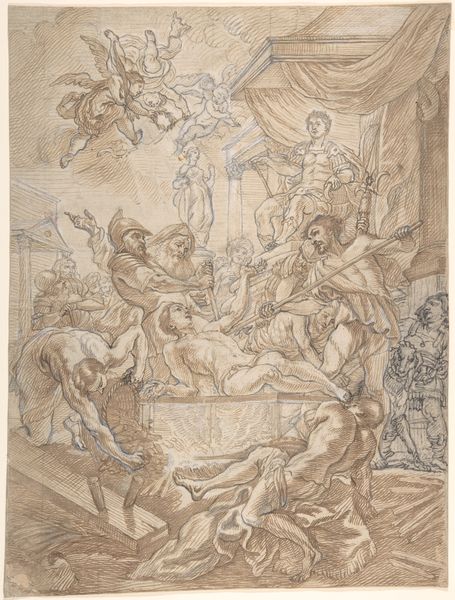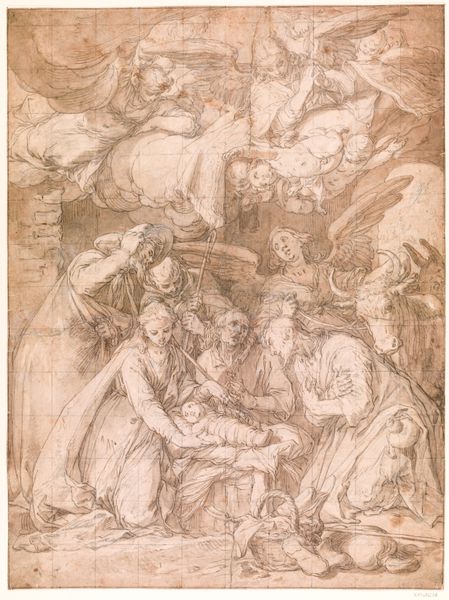
drawing, print, paper, charcoal
#
drawing
#
baroque
# print
#
charcoal drawing
#
figuration
#
paper
#
charcoal
#
history-painting
Dimensions: 17-7/8 x 13-3/16 in. (45.4 x 33.5 cm)
Copyright: Public Domain
Curator: The tension in Francisco Camilo's drawing, "The Martyrdom of St. Peter Martyr," is palpable. You can find this artwork here at the Metropolitan Museum of Art. What strikes you immediately about this scene? Editor: Well, the diagonal slash of the sword dominating the upper-right pulls my eye right to the act of violence. The murky charcoal heightens the drama and horror of the scene. It definitely has a theatrical flair. Curator: Camilo executed this work with charcoal on paper sometime between 1615 and 1673. Notice how the use of charcoal allows for a real dynamism. It moves freely between defined line work and softer tonal gradients. Consider also how the grid laid out, almost like scaffolding beneath the composition, reminds us that this work was a construction, perhaps even a prototype. Editor: That grid makes me consider Camilo's process more critically. Is this preliminary work or something to be exhibited? The theme is rather ubiquitous across centuries of western art: the glorified deaths of saints as propaganda, perhaps a recruitment tactic, if we’re honest, that aims to inspire loyalty in devotees while simultaneously validating ecclesiastical authority. Curator: I find it more interesting to ponder how this baroque piece embodies a crucial intersection of materiality, religious labor, and social conditions in 17th-century Spain. This rendering of Peter Martyr isn't merely symbolic or ideological; it’s tangible—formed with humble materials by human hands embedded within precise economies. The very *making* embodies the historical, social, and material relations that underscore his sacrifice. Editor: True, but the visual language employed reinforces structures of power, right? Martyrdom becomes a spectacle – those putti floating above feel excessively celebratory. We can read the visual emphasis as an attempt to inspire continued compliance and a warning against dissent from both the church and the nobility. Curator: Ultimately, reflecting on the interplay between artistic labour, the intrinsic value of the material components, and the historical moment allows for a deeper appreciation that counters simplified interpretations. It reveals the tangible realities behind representations of sacred suffering. Editor: And considering those implications reveals both how deeply entrenched and historically persistent certain strategies of control have become across both sacred and secular political spheres.
Comments
No comments
Be the first to comment and join the conversation on the ultimate creative platform.
